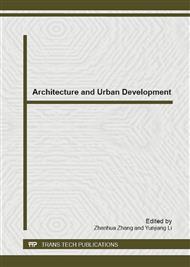[1]
Hillerborg A, Modéer M, Peterson P E. Analysis of crack propagation and crack growth in concrete by means of fracture mechanics and finite elements . Cement and Concrete Research, 1976, 6: 773-782.
DOI: 10.1016/0008-8846(76)90007-7
Google Scholar
[2]
Bozkurt D. Three dimensional finite element analysis to evaluate reflective cracking potential in asphalt concrete overlays [D] . Illinois : University of Illinois , department of civil engineering ,2002.
Google Scholar
[3]
H. Akbulut;K. Aslantas. Finite element analysis of stress distribution on bituminous pavement and failure mechanism.Materials and Design, 2005, 26(4): 383–387.
DOI: 10.1016/j.matdes.2004.05.017
Google Scholar
[4]
Dong Yuwen, Ren Qingwen. Study on numerical simulation of crack growth of concrete based on XFEM. Journal of Chongqing Jiaotong University(Natural Science),2009,28(1):36-40.
Google Scholar
[5]
Moës N, Belytschko T. Extended finite element method for cohesive crack growth. Engineering Fracture Mechanics, 2002, 69: 813-833.
DOI: 10.1016/s0013-7944(01)00128-x
Google Scholar
[6]
Daux C, Moës N, Dolbow J, Sukumar N, Belytschko T.Arbitrary branched and intersecting cracks with the extended finite element method. International Journal for Numerical Methods in Engineering, 2000, 48:1741-1760.
DOI: 10.1002/1097-0207(20000830)48:12<1741::aid-nme956>3.0.co;2-l
Google Scholar
[7]
Dolbow J, Moes N, Belytschko T. Modelling fracture in Mindlin-Reissner plates with the extended finite element method. International Journal of Solids and Structures,2000, 37: 7161-7183.
DOI: 10.1016/s0020-7683(00)00194-3
Google Scholar
[8]
Sukumar N, Chopp D L, Moës N, Belytschko T.Modelling holes and inclusions by level sets in the extended-finite element method Computer Methods in Applied Mechanics and Engineering, 2001, 190: 6183-6200.
DOI: 10.1016/s0045-7825(01)00215-8
Google Scholar
[9]
Fang Xiujun, Jin Feng. Extended finite element method based on ABAQUS. Engneering Mechanics , 2007, 24( 7) : 6 -10.
Google Scholar
[10]
E. Giner, N. Sukumar, J.E. Tarancón, F.J. Fuenmayor. An Abaqus implementation of the extended finite element method. Engineering Fracture Mechanics,2009,26:347-368.
DOI: 10.1016/j.engfracmech.2008.10.015
Google Scholar
[11]
J. L. Asferg, P. N. Poulsen and L. O. Nielsen. A consistent partly cracked XFEM element for cohesive crack growth. International Journal for Numerical Methods in Engineering,2007,72:464–485.
DOI: 10.1002/nme.2023
Google Scholar


